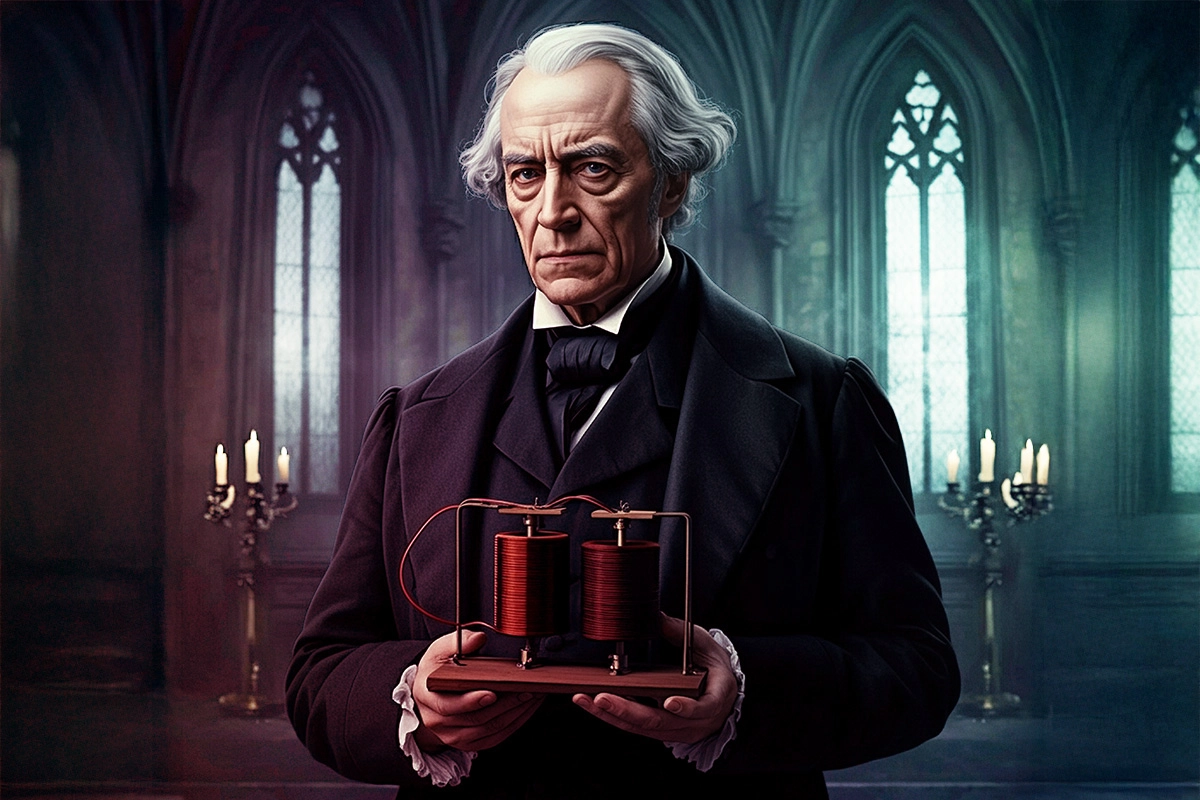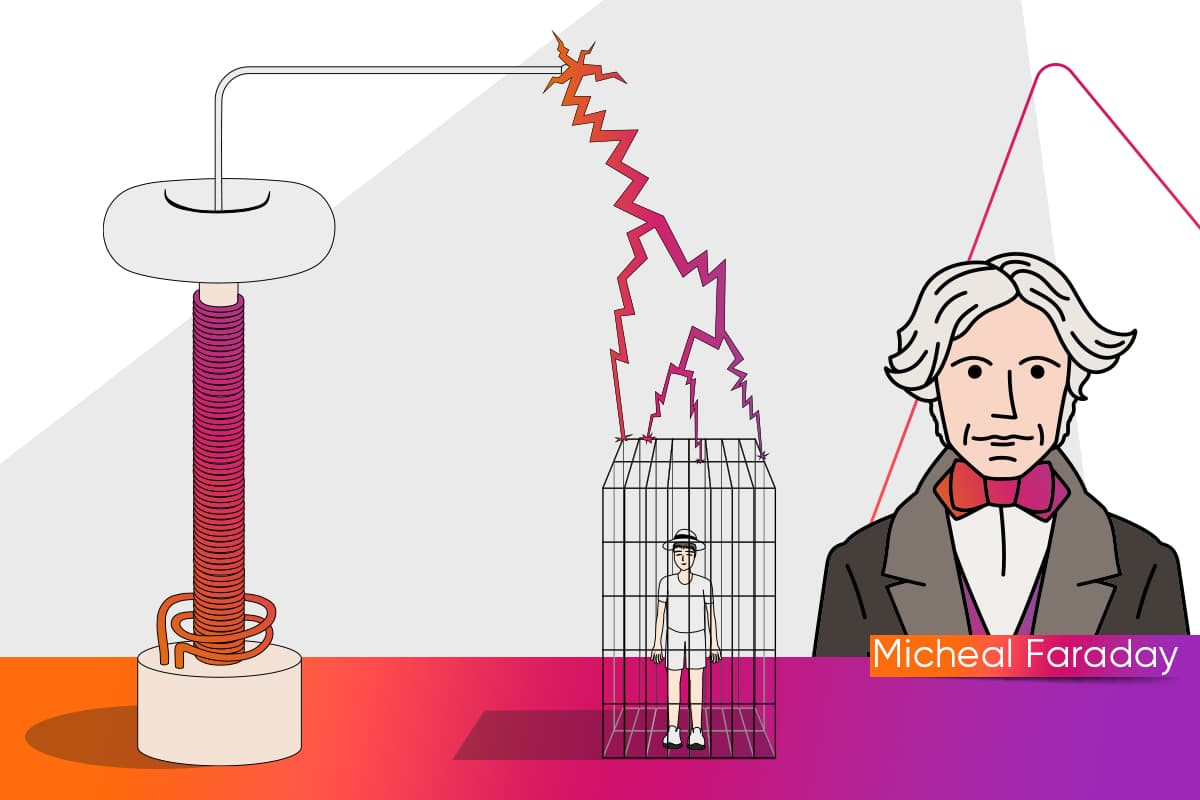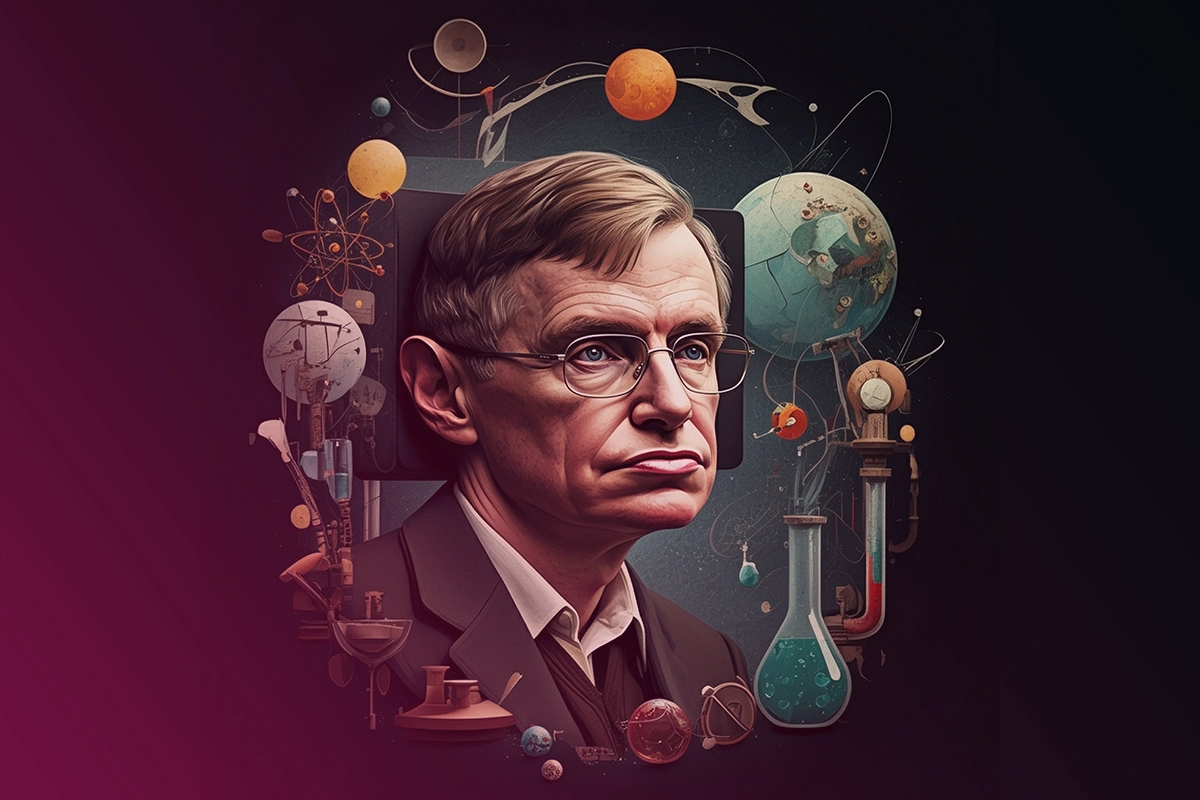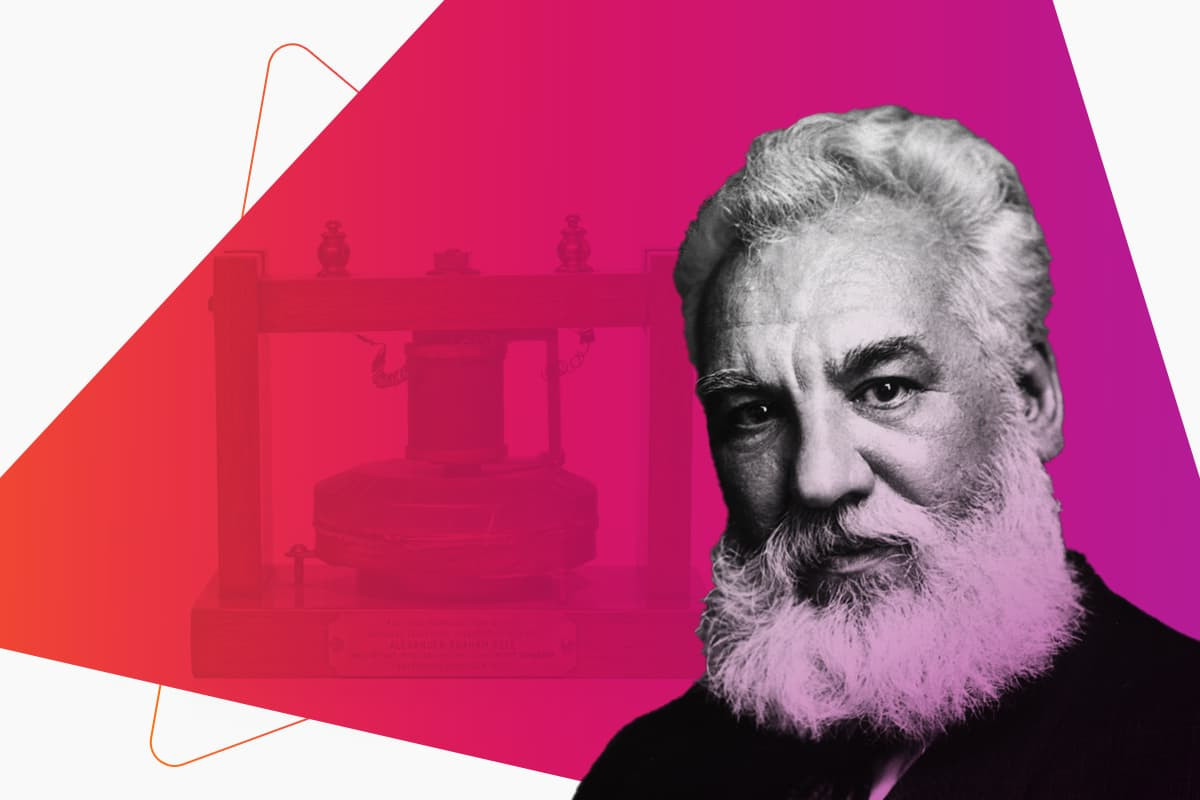
Who is Michael Faraday? His Life and Revolutionary Inventions
What is in this article?
Despite a challenging childhood, Michael Faraday’s unwavering passion for science empowered him to lay the foundations of modern electrical systems through his pioneering work in electromagnetism and electrochemistry, ultimately earning him worldwide recognition. Seizing every opportunity to educate himself, Michael Faraday transformed his passion for science into a legacy that not only inspired generations of scientists but also provided them with a solid foundation for future discoveries. Join us as we take a closer look into the remarkable life and groundbreaking contributions of Michael Faraday.
The Journey of Michael Faraday’s Life: The Story of a Bookbinder’s Apprentice Who Changed Science Forever
Born on 22 September 1791 in England, Michael Faraday grew up as one of four children in a poor family, far from the world of science he would one day revolutionize. With his father, a blacksmith, frequently falling ill and unable to work steadily, Faraday’s family faced even greater hardships in an already challenging life. At just 14, Faraday began working at a bookbinding shop which would quietly mark the beginning of his path to scientific greatness. Bookbinding gave Faraday more than a trade; it offered him the invaluable opportunity to read every book that crossed his path. This rare access to otherwise unreachable books gave Faraday an extraordinary opportunity to educate himself in ways few others could. Through those books, Faraday discovered the wonders of electricity, a fascination that ultimately guided him toward his life’s purpose. At that pivotal moment, a customer invited him to attend Sir Humphry Davy’s lectures, a chance that would open the door to the greatest opportunity of his life.
Faraday followed Sir Humphry Davy’s lectures with great interest and boldly turned that opportunity into a job request, which was granted and changed the course of his life. While travelling alongside Humphry Davy as his assistant, Faraday met some of the greatest minds of his era, including André-Marie Ampère and Alessandro Volta, whose names still define the basic units of electricity. Following Sir Humphry Davy’s retirement in 1827, Michael Faraday, who had once been his assistant, was appointed as professor of chemistry at the Royal Institution, marking a major turning point in his scientific journey.
Faraday made numerous discoveries in the fields of physics and chemistry during his lifetime, but it was his pioneering work on electricity that ultimately earned him lasting fame. Faraday’s contributions, including the invention of the electric motor and generators as well as the Faraday effect which revealed the link between light and electromagnetism, laid the foundation for countless scientists who followed in his footsteps. In 1839, Faraday withdrew from his scientific work due to health problems, and while he returned in 1845, advancing age gradually limited his involvement in research. Michael Faraday died on 25 August 1867, leaving behind revolutionary discoveries in electricity that became the cornerstone of the modern world.
.webp) What Did Michael Faraday Discover? Electromagnetic Induction
What Did Michael Faraday Discover? Electromagnetic Induction
While the first attempts to answer the question “What is magnetic field?” date back to Hans Christian Orsted’s experiments in the 1820s, it was the groundbreaking work of Andre-Marie Ampere, James Clerk Maxwell, and Michael Faraday that truly illuminated the mysteries of magnetism and reshaped our understanding of the invisible forces around us. Faraday’s exploration of magnetic fields ultimately led to one of the most important breakthroughs in scientific history, the discovery of electromagnetic induction.
What truly cemented Michael Faraday’s place in the history of science was his pioneering research in electromagnetism, which laid the foundation for much of the technology we rely on today. After realizing that moving a magnet through a coil could generate electricity, Michael Faraday invented the electric motor in 1821 and, ten years later in 1831, discovered electromagnetic induction, a breakthrough that would go on to shape modern energy systems. The device Faraday developed, known as the Faraday disk, is widely regarded as the forerunner of today’s electric generators and laid the foundation for large-scale power production. Any meaningful answer to the question “What is a generator?” must begin with Michael Faraday, the man whose insights helped transform a scientific idea into a global source of power. Faraday’s discovery sparked a wave of interest in electricity within the scientific community and paved the way for many of the technologies that define modern life.
Michael Faraday’s Research and Scientific Discoveries
While the origins of the question “What is electricity?” can be traced back to ancient Egypt and Greece, meaningful scientific exploration of electricity only began centuries later, setting the stage for true innovation. Michael Faraday, whose work was instrumental in making electricity usable as we know it today, was a self-taught genius who turned every opportunity into a step forward in his lifelong pursuit of knowledge. While working under Sir Humphry Davy, Michael Faraday honed his skills as a chemist and managed to liquefy several gases, including chlorine and carbon dioxide, during an era when such experiments pushed the limits of known science. As he concentrated more on chemistry, Faraday made several major discoveries, such as the identification of benzene and other hydrocarbons, which had a lasting impact on the field. Faraday also applied his scientific curiosity to steel alloy and optical glass, areas that would later prove fundamental to advances in modern engineering.
Though Faraday made noteworthy contributions as a talented chemist, it was his lifelong dedication to understanding electricity that truly earned him a place among the most celebrated figures in scientific history. Driven by the idea that different forms of force could be transformed into one another, Faraday embarked on a series of experiments to explore and demonstrate this profound connection in nature. In 1821, Faraday created what is now considered the earliest version of the electric motor, using magnetic force and electric current to successfully generate mechanical motion. Ten years later, expanding on his earlier experiments, Faraday successfully converted magnetic force into electrical energy, laying the groundwork for modern electricity generation. By inventing the first electric generator, Faraday earned his place as a towering figure in scientific history, forever changing the course of technological progress.
Faraday’s contributions to electricity extended far beyond the invention of the electric motor and generator, opening new doors to fields that were previously unimaginable. Faraday, following his discovery of electrolysis, sought to prove through experimentation that all forms of electricity share the same fundamental nature. With his formulation of the two laws of electrolysis, Faraday made lasting contributions that shaped the field of electrochemistry. Faraday showed that the degree of chemical change and decomposition in a solution is directly proportional to the quantity of electricity that passes through it, laying the groundwork for modern electrochemical calculations. Faraday also found that equal amounts of electricity produce quantities of deposited or dissolved substances in proportion to their chemical equivalents, revealing a consistent relationship in electrochemical processes. The Faraday Cage, designed to block electric waves, is perhaps Faraday’s most recognizable invention and remains the first thing that comes to mind for many when his name is mentioned in connection with electricity.
In 1839, Michael Faraday suffered a severe nervous breakdown that forced him to step back from his scientific work for a significant period. When Faraday eventually resumed his research on electromagnetism, he set his sights on uncovering the hidden connection between light and magnetism. His research ultimately led to the discovery of the Faraday effect, which demonstrated a clear link between light and magnetism. Although Faraday lacked the mathematical tools to express his theories, it was James Clerk Maxwell who, inspired by Faraday’s ideas, went on to formulate the electromagnetic equations that would transform physics. Faraday’s visionary ideas played a central role in Maxwell’s success, underscoring his lasting impact on the development of electromagnetic theory.
.webp) The Invention of the Electric Motor and Generator
The Invention of the Electric Motor and Generator
Even as a teenager working in bookbinding, Michael Faraday showed a keen fascination with electricity, and over the years, he not only advanced his own knowledge but also made lasting contributions through scientific discoveries and inventions. In 1821, Faraday discovered electromagnetic rotation, laying the foundation for how electric motors function to this day. His experiments led to the invention of the first electric motor, marking a turning point in the practical use of electricity. Faraday continued his work in the field throughout his career and, in 1831, he discovered electromagnetic induction and invented the first dynamo, a device that would later inspire the development of modern generators known as the Faraday disk. Faraday’s dynamo began to be produced on a large scale after the 1850s and became one of the earliest technologies used to generate electricity for lighting.
Faraday’s Law and Modern Electrical Systems
Faraday’s law of induction stands today as a core principle behind the operation of modern electrical systems, forming the basis of how we generate and distribute electricity around the world. Faraday’s law states that the electromotive force induced in a circuit increases in direct proportion to the rate of change of magnetic flux through it, laying the foundation for how generators and transformers operate today. Faraday’s discovery laid the groundwork for a wide range of technologies we rely on today, from electric generators, transformers, and electric motors to wireless charging, induction cooktops, magnetic stripe cards, and data storage devices.
.webp) Michael Faraday’s Impact on Electricity Generation and Distribution
Michael Faraday’s Impact on Electricity Generation and Distribution
Electricity is now so integrated into daily life that most people rarely consider how it is produced and distributed across entire cities, unless they are directly involved in the field. The fact that electricity is so widely accessible today owes a great deal to the foundational work of Michael Faraday, whose discoveries continue to power the modern world in every sense. Faraday’s inventions and discoveries form the very foundation of the modern world, influencing everything from how we generate electricity to how we power our daily lives. The electrical generators and transformers developed by Michael Faraday remain fundamental technologies that continue to power the way we generate and distribute electricity in the modern world.
Faraday’s limited formal education made it harder for him to express his discoveries mathematically, yet it never held back the depth or impact of his scientific insight. As a result, many of Faraday’s insights were later translated into mathematical language by other scientists, allowing his discoveries to be formalized and integrated into the broader framework of modern physics. Driven by a deep passion for science, Faraday laid the groundwork for today’s electrical systems, shaping the very foundation of the modern world as we know it. If you enjoyed exploring Michael Faraday’s legacy, make sure to check out our other blog posts featuring the fascinating lives and groundbreaking contributions of the scientists who helped shape the world we live in today.

 Online Services
Online Services Application Inquiry
Application Inquiry Pay Assurance Fee
Pay Assurance Fee Query Installation Number
Query Installation Number Compensation Fee Inquiry
Compensation Fee Inquiry Automatic Payment Order Inquiry
Automatic Payment Order Inquiry Partnership
Partnership
.webp)






Leave a Comment